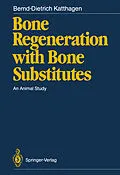Congenital and acquired bone defects constitute a central problem of traumatology and orthopedics. In order to cure these defects it is often necessary to fill up the bones operatively with suitable substances. Recently, so-called bone substitutes (collagen, gelatine, bone matrix, calcium phospate, hydroxyapatite) have also been recommended. Following an introductory presentation of bone regeneration and transplants, these substitutes are discussed here in a comprehensive survey of the literature. Particular attention is given to the significance of mineral substance such as hydroxyapatite, which will undoubtedly find a place in bone surgery owing to its outstanding bioactivity and biotolerance. The implants examined are also of significance for maxillofacial surgery and dentistry. The histologic techniques in the staining of undecalcified bone preparations and in histomorphometry are presented in a special chapter.
Inhalt
1 Introduction and Scope of the Study.- 2 Bone Biology.- 2.1 Bone Formation.- 2.2 Bone Cells.- 2.3 Intercellular Substance.- 2.4 Bone Mineralisation.- 2.5 Bone Regeneration.- 3 Bone Transplants.- 3.1 Preliminary Remarks.- 3.2 Autogenic (Autogenous) Spongiosa Transplants.- 3.3 Cortical Autografts.- 3.4 Allogenic (Homologous) Bone Transplants.- 3.5 Xenogenic (Heterologous) Bone Transplants.- 3.6 Kiel Bone Splinter.- 4 Bone-Replacement Materials.- 4.1 Plastic and Metal Implants.- 4.2 Collagen.- 4.3 Bone Matrix (BMP).- 4.4 Glass Ceramics.- 4.5 Synthetic Calcium Phosphates.- 4.6 Collapat.- 4.7 Calcium Phosphates of Natural Origin.- 4.8 Pure Mineral Bone Pyrost.- 5 Experimental Section.- 5.1 Test Animals and Animal Housing.- 5.2 Operating Method.- 5.3 Histological Technique.- 5.3.1 General Aspects ofUndecalcified Bone Histology.- 5.3.2 Polychrome Fluorescent Staining.- 5.3.3 Fixation and Embedding of the Bone Specimens.- 5.3.4 Microradiography.- 5.3.5 Fluorescence Microscopy.- 5.3.6 Refinement of the Sectioning Technique.- 5.3.7 Staining of Undecalcified Bone Preparations.- 5.3.7.1 Masson-Goldner (MG) Staining.- 5.3.7.2 Giemsa Staining.- 5.3.8 Histomorphometry.- 5.4 Description of the Test Series.- 5.4.1 Preparation of Implants.- 5.4.2 Results.- 5.4.2.1 Empty (Control) Cavities.- 5.4.2.2 Autogenic Spongiosa.- 5.4.2.3 Bone Matrix.- 5.4.2.4 Kiel Bone Splinters.- 5.4.2.5 Gelatin.- 5.4.2.6 Collagen Web with Apatite Powder.- 5.4.2.7 Ceramised Apatite Granules (Apagran).- 5.4.2.8 Collagen Web with Ceramised Apatite Granules (Collapat D).- 5.4.2.9 Cross-linked Collagen Web with Small Ceramised Apatite Granules (Collapat E).- 5.4.2.10 Totally Deproteinated Natural Mineral Bone (Pyrost).- 5.4.2.11 Synthetic Porous Apatite Ceramic Materials.- 6 Discussion of the Experimental Results.- 7 Summary.- References.
